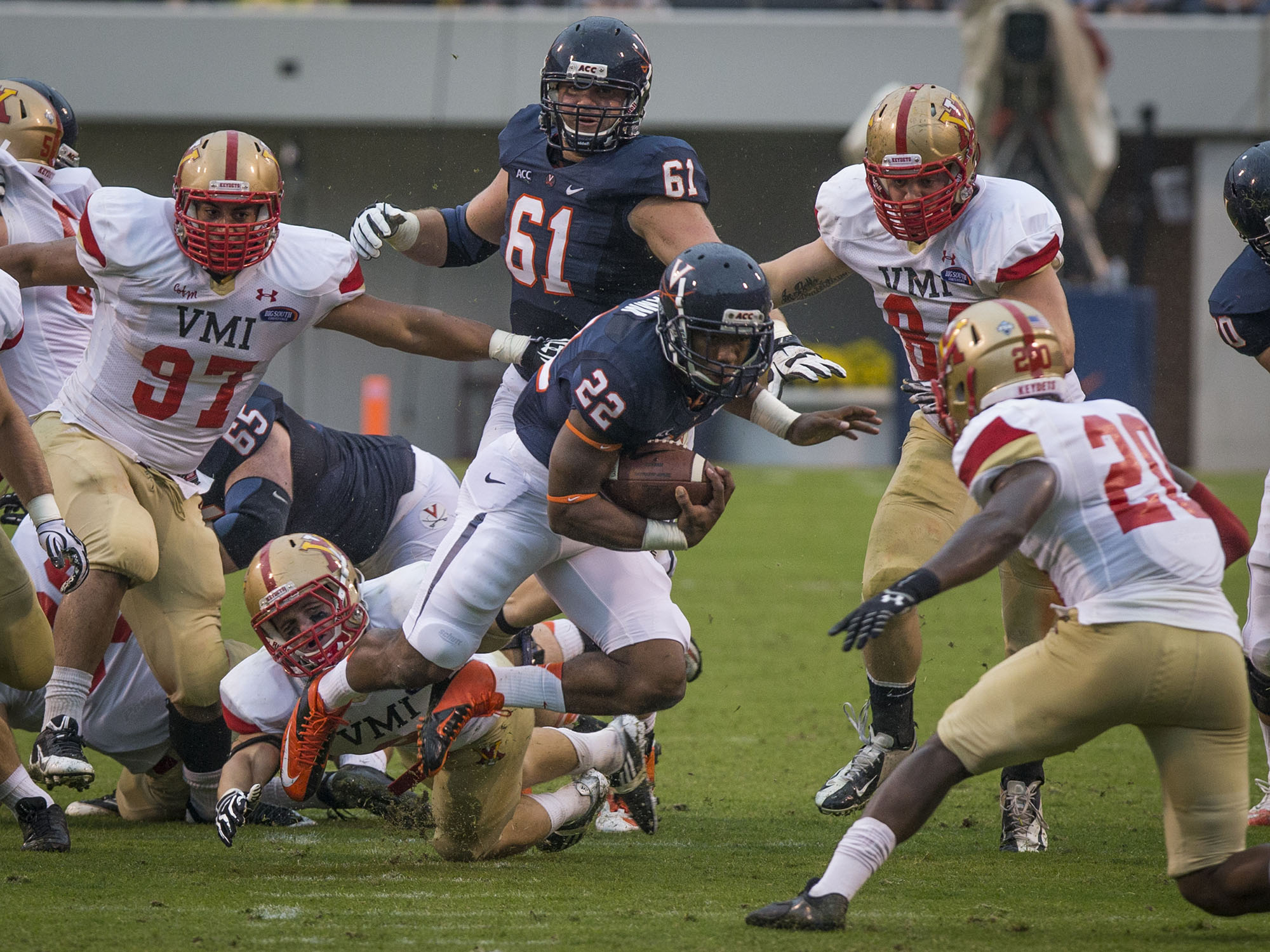Despite growing concerns about concussions, the NCAA has not regulated full-contact football practices, arguing that there’s insufficient data available about head impacts. A new study from the University of Virginia School of Medicine begins to address that lack of data, detailing the number and severity of sub-concussive head impacts over the course of an entire season.
The researchers conclude that the NCAA’s lack of regulation comes at a cost to college players that seems “unnecessarily high” and call for changes to reduce head impacts.
“Unlike the proactive approach of the NFL [which has enacted practice rules to limit head injuries], the NCAA has been waiting for data to support their evolving football guidelines and regulations,” said lead researcher Dr. Jason Druzgal of U.Va.’s Department of Radiology and Medical Imaging. “The results of our study start to provide some of that data.”
The researchers had U.Va. football players wear a high-tech, impact-sensing patch behind their ear during 12 games, 27 full-pad practices, 29 half-pad practices and 10 helmet-only practices. Players suffered the most frequent head impacts during games; as the amount of padding increased during practices, so did the frequency and cumulative effect of head impacts. A total of 890 practice and game events were recorded and measured from 16 players.
In terms of the severity of individual impacts, the researchers found no difference in games and practices, except for the helmet-only practices, which had a lower average impact severity. However, very significant differences were seen in the number of hits per athletic event, increasing from helmet-only practice to half-pad practice to full-pad practice to games.
“The number of hits experienced during each event type is the main driver of event type differences in impact burden per athletic exposure, rather than the average severity of impacts that occur during the event,” the authors write. “These findings suggest that regulation of practice equipment could be a fair and effective way to substantially reduce sub-concussive head impact in thousands of collegiate football players.”
The researchers conclude by noting that the National Football League restricts the number of full-contact practices to 14 over the course of the season.
“The present data suggests similar regulations in college football would reduce the burden of head impact to thousands of athletes,” the authors write. “While the research community should continue to investigate the cause and nature of these practice type differences, the potential human cost of leaving practice equipment unregulated seems unnecessarily high.”
The research has been detailed in a paper published online by the Journal of Neurosurgery. Its authors were Bryson B. Reynolds, James Patrie, Erich J. Henry, Howard P. Goodkin, Donna Broshek, Max Wintermark and Druzgal.
The study is believed to be the first published use of the xPatch sensor, manufactured by X2 Biosystems, based in Seattle and Silicon Valley.
Media Contact
Article Information
August 5, 2015
/content/college-football-head-impact-study-suggests-steps-reduce-risk

